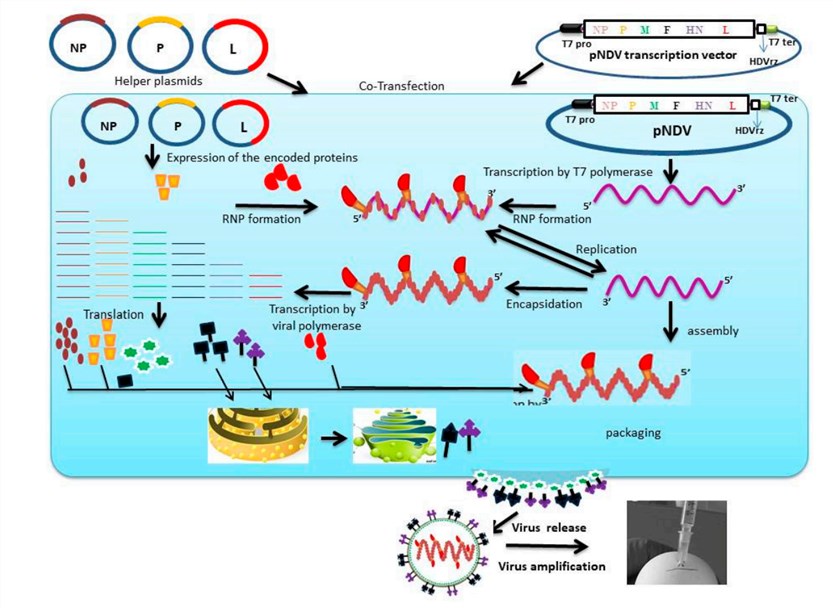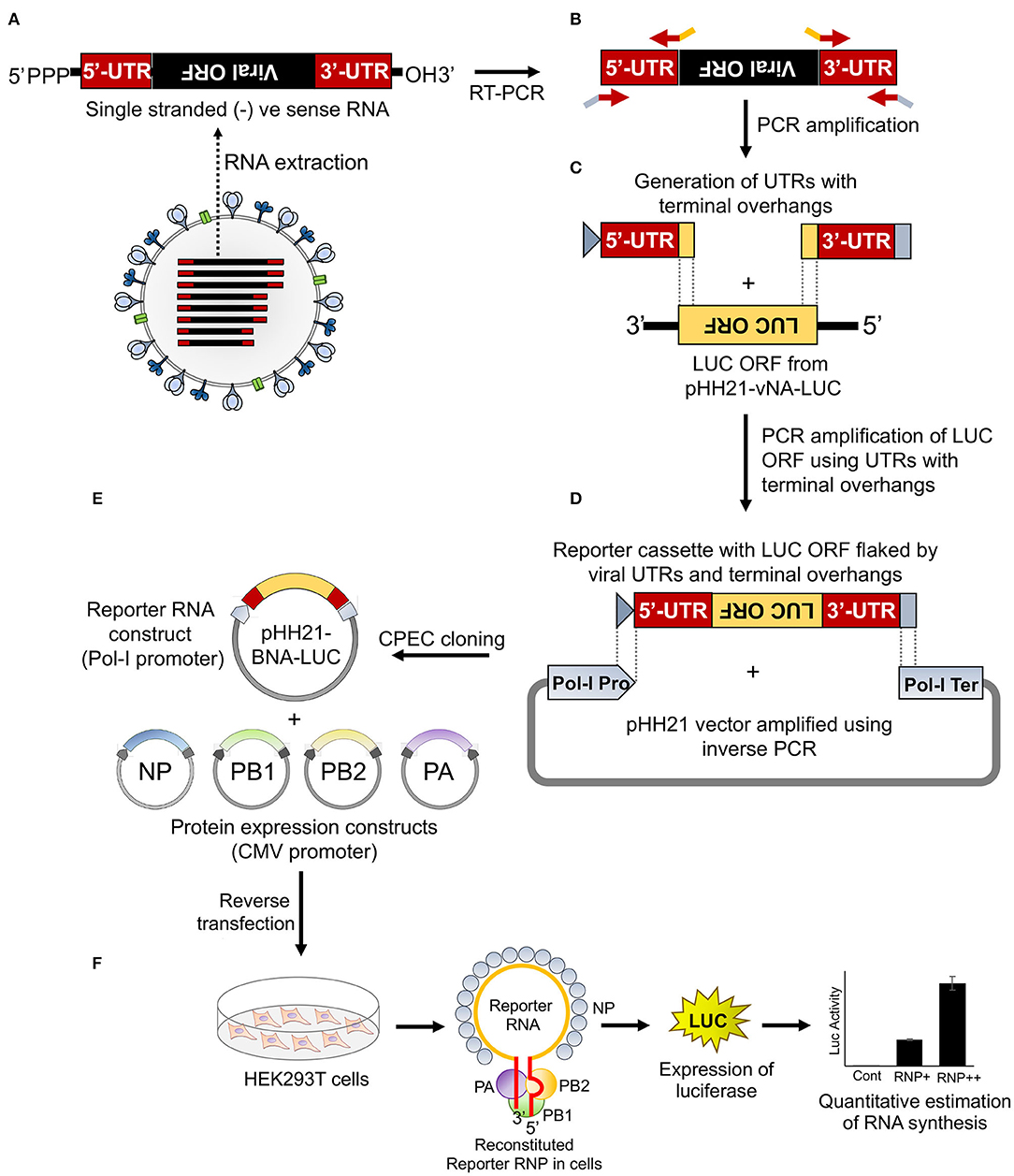reverse genetics influenza
Reverse genetics begins with making. Reverse genetics has been used to generate mutant or reassortant influenza viruses to assess their replication virulence pathogenicity host range and transmissibility.
However the process is not flawless and difficulties remain during cloning of influenza gene segments into reverse genetics vectors pHW2000 pHH21 pCAGGS.

. The ability to produce a candidate reference virus in such a short period of time sets a new standard for rapid response to emerging infectious disease threats and clearly shows the usefulness of reverse genetics for influenza vaccine development. This reverse genetics system will become a powerful tool for use in studies related to understanding the molecular mechanisms of viral. Due to the disease burden of influenza virus types A and B vaccines which are manufactured as formalin-inactivated killed virus KV and live-attenuated virus LAIV are produced to provide coverage against currently circulating influenza A IAV and B IBV viruses.
Such a system could aid in understanding the molecular. RNA polymerase I I nfluenza epidemics and pandemics continue to claim human lives and impact the global economy. Reverse genetics RG is an essential tool to dissect the biological features of viruses in vivo and in vitro.
In the future reverse genetics will likely be the method of choice for the generation of conventional influenza vaccine strains because gene reassortment by more. Different strategies have been explored showing promising results. Here we developed a reverse genetics system that allows for the generation of IDV from cloned cDNAs and the introduction of mutations into the IDV genome.
This technology involved the transfection of in vitro-reconstituted ribonucleoprotein RNP complexes into influenza virus-infected cells. Reverse genetics is an experimental molecular genetics technique that enables researchers to elucidate gene function by examining changes to phenotypes of cells or organisms caused by genetically. Likewise reverse genetics techniques have been used for the implementation of inactivated or live-attenuated influenza vaccines and the identification of anti-influenza drugs and their mechanism of antiviral activity.
Influenza reverse genetics techniques have had an important effect on expanding our knowledge of the molecular biology and pathogenesis of influenza viruses allowing researchers to answer important questions in the biology of IAV and IBV that were not possible using conventional virological or biochemical procedures 12144147. Moreover this technology is now being used to generate approved influenza virus vaccines and develop novel vaccines to combat seasonal and future pandemic influenza viruses. Influenza virus rescue entirely from plasmid DNA involves the transfection of plasmids encoding each of the eight RNA segments under control of the pol I promoter and terminator and plasmids encoding the four proteins that make up the polymerase complex under control of the pol II promoter.
This new system is thus suitable for influenza virus vaccine production and may be applicable to other reverse genetics sys- tems that rely on the introduction of several plasmids into eukary- otic cells. Reverse genetics systems have transformed the ability to manipulate and study negative strand RNA viruses. While reverse genetics systems for IAV 31 33 IBV 34 35 and ICV 28 36 exist a reverse genetics system for IDV has not been established yet.
Since the introduction of reverse genetics systems over a decade ago the ability to generate designer influenza viruses in the laboratory has advanced both basic and applied research providing a. A reverse genetics system for negative-strand RNA viruses was first successfully developed for influenza viruses. For this purpose we chose the X-31.
The generation of vaccines for highly pathogenic avian influenza viruses including those of the H5N1 subtype relies on reverse genetics which allows the production of influenza viruses from cloned cDNA. In 2002 these reverse genetics approaches allowed also the recovery of recombinant influenza B viruses entirely from plasmid. The varied applications of the technology as well as current trends such as 2A self-cleaving peptides for co- expression of foreign genes are also outlined.
This review summarizes major technical breakthroughs in the development of reverse genetics technologies for negative-sense RNA viruses using Influenza A Virus IAV as a model system. Among them the smallest NS segment 8 encoding two proteins NS1 and NEP through an alternate splicing. Using reverse genetics techniques several 2A-based strategies have been developed to generate recombinant influenza viruses expressing additional heterologous proteins.
The same technologies and procedures are currently being used to create reference vaccine viruses against the 2004 H5N1. In the particular case of influenza A viruses plasmid-based reverse genetics approaches have allowed for a better understanding of among others virulence transmission mechanisms of antiviral resistance and the development of alternative vaccines and. Reverse genetics has facilitated advancements in the field of vaccine development against influenza B virus.
In recent years the addition of viruses from both lineages to the seasonal influenza vaccine formulation has improved vaccine protection although quadrivalent vaccines are not available worldwide. Here we extended and adopted the cDNA based reverse genetic system to generate both injectable and nasal spray type live attenuated influenza vaccine LAIV. RG manipulations were performed first using DNA viruses and then using RNA viruses.
Reverse genetics is used in many laboratories around the world and enables the creation of tailor-made influenza viruses with a desired genotype or phenotype. Reverse genetics is a method in molecular genetics that is used to help understand the function of a gene by analysing the phenotypic effects caused by genetically engineering specific nucleic acid sequences within the gene. However the conventional sequence-dependent method for cloning influenza genome segments is time-consuming and requires.
The poliovirus was the first positive sense RNA virus to be manipulated by RG 4041. The process proceeds in the opposite direction to forward genetic screens of classical genetics. Influenza D virus IDV is considered to be a causative agent of the BRDC.
Reverse genetics systems allow artificial generation of non-segmented and segmented negative-sense RNA viruses like influenza viruses entirely from cloned cDNA. The genome of IAV consists of eight segments of negative-sense RNA. Although the licensed LAIV vaccine provides enhanced coverage over the KV vaccine it is only licensed for.
Reverse genetics systems are vital tools not only for studying the biology of viruses but also for use in applications such as recombinant vaccine viruses. The reverse genetics RG system of influenza A viruses is well established. Several variations of the.
The influenza B virus gene segments were cloned by reverse transcription-PCR RT-PCR using appropriate primers complementary to the segment termini 26 primer sequences available on request that introduced Bsm BI or Sap I restriction enzyme sites to facilitate their insertion into pPRG cassette vectors containing these sites. Reverse genetics for influenza B virus. While forward genetics seeks to find the genetic basis.

Schematic Diagram Of The Reverse Genetic Strategy To Produce Candidate Download Scientific Diagram

Viruses Free Full Text The Development And Use Of Reporter Influenza B Viruses Html

Variations In Reverse Genetics Systems For Influenza Virus Reverse Download Scientific Diagram

Ijms Free Full Text Reverse Genetics Approaches For The Development Of Influenza Vaccines Html

Diagrammatic Representation Of The Reverse Genetics Process In Download Scientific Diagram

Pdf Reverse Genetics Approaches For The Development Of Influenza Vaccines Semantic Scholar

Generation Of Recombinant Vaccines For Influenza By Reverse Genetics Download Scientific Diagram

Technique Evolution Of Influenza Virus Reverse Genetics Helper Virus Download Scientific Diagram

Reverse Genetics Technology Creative Biolabs

Reverse Genetics Approach For Generating Live Attenuated Influenza Download Scientific Diagram

Types Of Viruses Vector Illustration Labeled Drawings Vectormine Medical Laboratory Science Study Biology Microbiology Study

Viruses Free Full Text The Development And Use Of Reporter Influenza B Viruses Html

Ijms Free Full Text Reverse Genetics Approaches For The Development Of Influenza Vaccines Html

A Multi Targeting Nucleoside Modified Mrna Influenza Virus Vaccine Provides Broad Protection In Mice Molecular Therapy

Frontiers A Comprehensive Roadmap Towards The Generation Of An Influenza B Reporter Assay Using A Single Dna Polymerase Based Cloning Of The Reporter Rna Construct

Reverse Genetics Approaches To Generate Influenza Vaccines For The Download Scientific Diagram

Generation Of H9n2 Influenza Viruses By Reverse Genetics A Duck Hong Download Scientific Diagram

Generation Of H9n2 Influenza Viruses By Reverse Genetics A Duck Hong Download Scientific Diagram

0 Response to "reverse genetics influenza"
Post a Comment